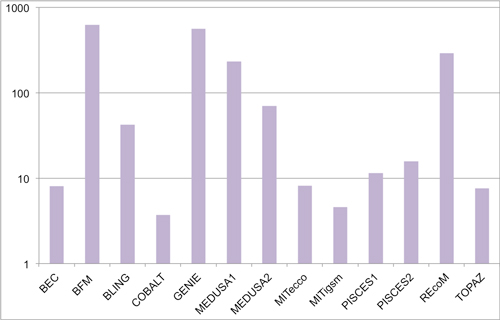Are the dissolved iron distributions well represented by the global ocean biogeochemistry models?
Alessandro Tagliabue and co-workers (2016, see reference below) have conducted the first intercomparison of 13 global ocean iron models against the latest datasets emerging from GEOTRACES.
A large disparity in the residence times for iron across the different models was found, which reflects a lack of agreement in how to represent the iron cycle in such models. Many models perform relatively poorly in their representation of the observed trends, but those who reflect the emerging insights into new sources and cycling pathways are better able to reproduce observed features.
A key challenge for the future is to reduce uncertainties in the iron sources and especially the magnitude of scavenging losses.

Reference:
Tagliabue, A., Aumont, O., DeAth, R., Dunne, J. P., Dutkiewicz, S., Galbraith, E., Misumi, K., Moore, J. K., Ridgwell, A., Sherman, E., Stock, C., Vichi, M., Völker, C.,Yool, A. (2016). How well do global ocean biogeochemistry models simulate dissolved iron distributions? Global Biogeochemical Cycles, 30(2), 149–174. doi:10.1002/2015GB005289
